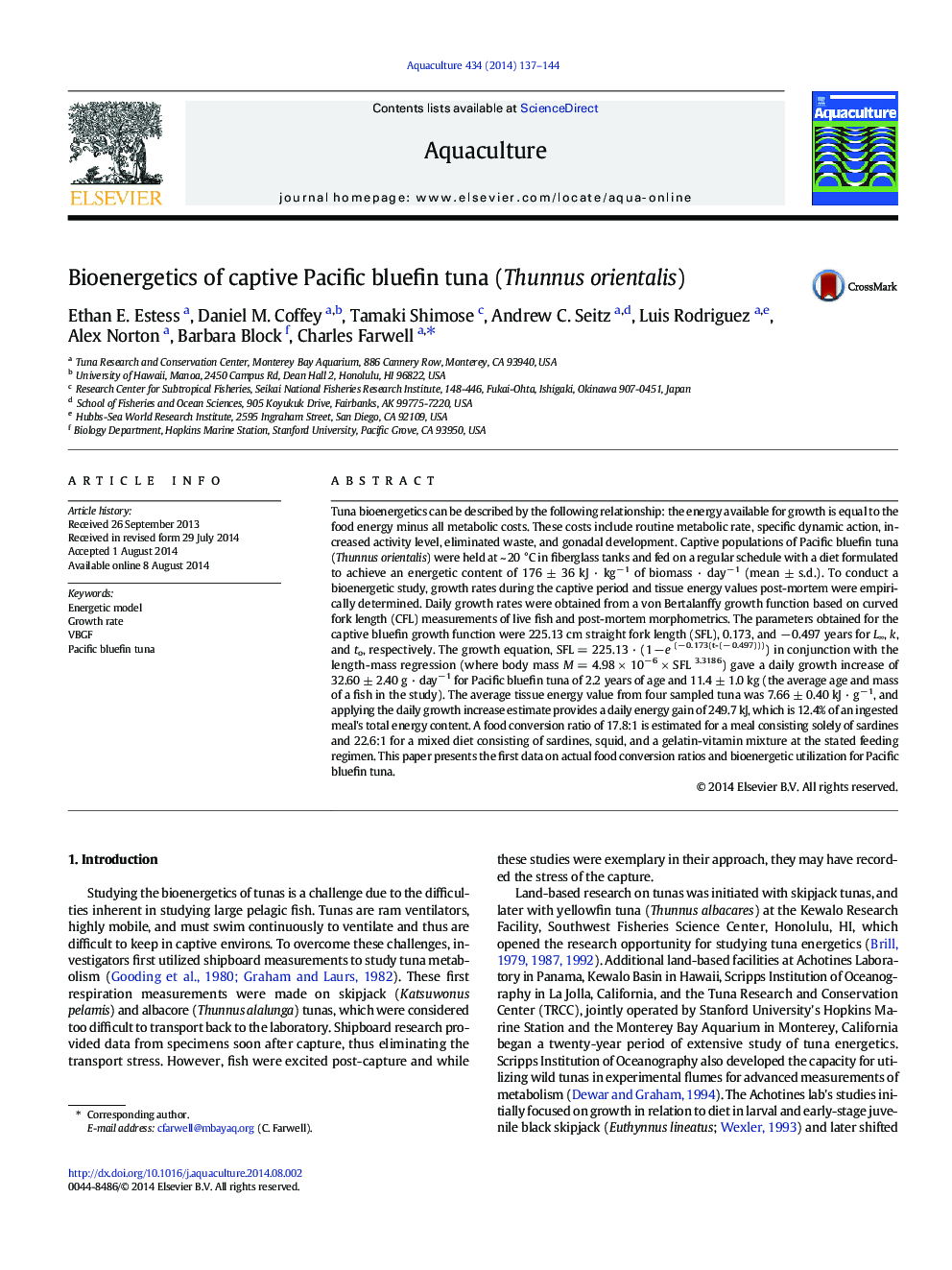| کد مقاله | کد نشریه | سال انتشار | مقاله انگلیسی | نسخه تمام متن |
|---|---|---|---|---|
| 2421725 | 1552853 | 2014 | 8 صفحه PDF | دانلود رایگان |

• This paper presents the first data on actual food conversion ratios and bioenergetic utilization for Pacific bluefin tuna.
• This work gives an important insight into the energy requirements of an endothermic fish species.
• New information on tuna growth rates may be useful in understanding Pacific bluefin tuna aquaculture operations.
Tuna bioenergetics can be described by the following relationship: the energy available for growth is equal to the food energy minus all metabolic costs. These costs include routine metabolic rate, specific dynamic action, increased activity level, eliminated waste, and gonadal development. Captive populations of Pacific bluefin tuna (Thunnus orientalis) were held at ~ 20 °C in fiberglass tanks and fed on a regular schedule with a diet formulated to achieve an energetic content of 176 ± 36 kJ · kg− 1 of biomass · day− 1 (mean ± s.d.). To conduct a bioenergetic study, growth rates during the captive period and tissue energy values post-mortem were empirically determined. Daily growth rates were obtained from a von Bertalanffy growth function based on curved fork length (CFL) measurements of live fish and post-mortem morphometrics. The parameters obtained for the captive bluefin growth function were 225.13 cm straight fork length (SFL), 0.173, and − 0.497 years for L∞, k, and to, respectively. The growth equation, SFL = 225.13 · (1 −e(− 0.173(t-(− 0.497)))) in conjunction with the length-mass regression (where body mass M = 4.98 × 10− 6 × SFL 3.3186) gave a daily growth increase of 32.60 ± 2.40 g · day− 1 for Pacific bluefin tuna of 2.2 years of age and 11.4 ± 1.0 kg (the average age and mass of a fish in the study). The average tissue energy value from four sampled tuna was 7.66 ± 0.40 kJ · g− 1, and applying the daily growth increase estimate provides a daily energy gain of 249.7 kJ, which is 12.4% of an ingested meal's total energy content. A food conversion ratio of 17.8:1 is estimated for a meal consisting solely of sardines and 22.6:1 for a mixed diet consisting of sardines, squid, and a gelatin-vitamin mixture at the stated feeding regimen. This paper presents the first data on actual food conversion ratios and bioenergetic utilization for Pacific bluefin tuna.
Journal: Aquaculture - Volume 434, 20 October 2014, Pages 137–144